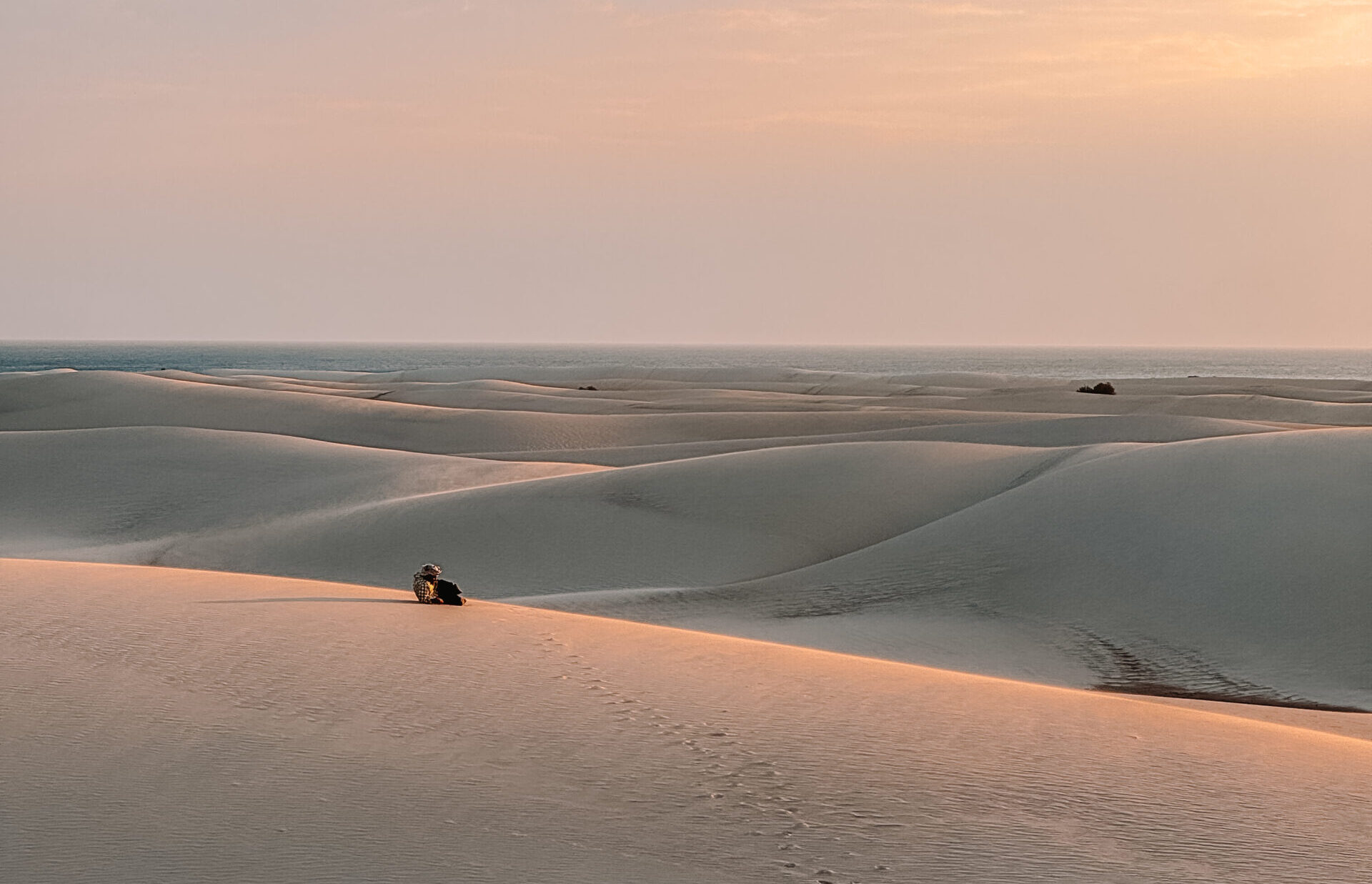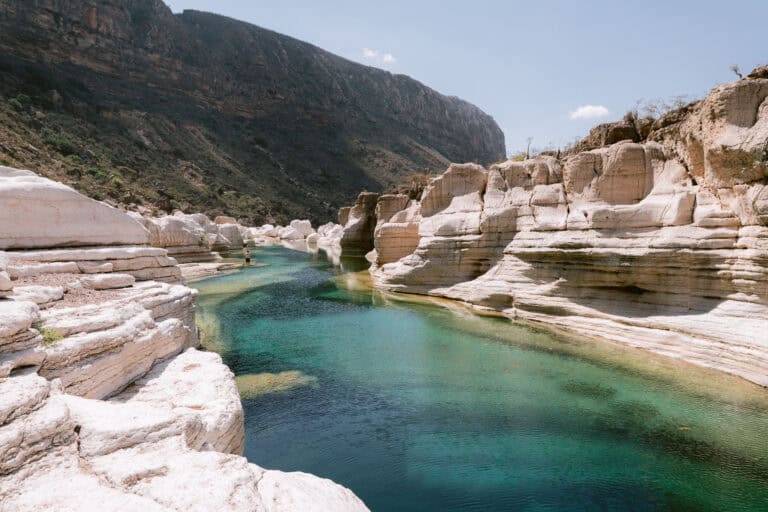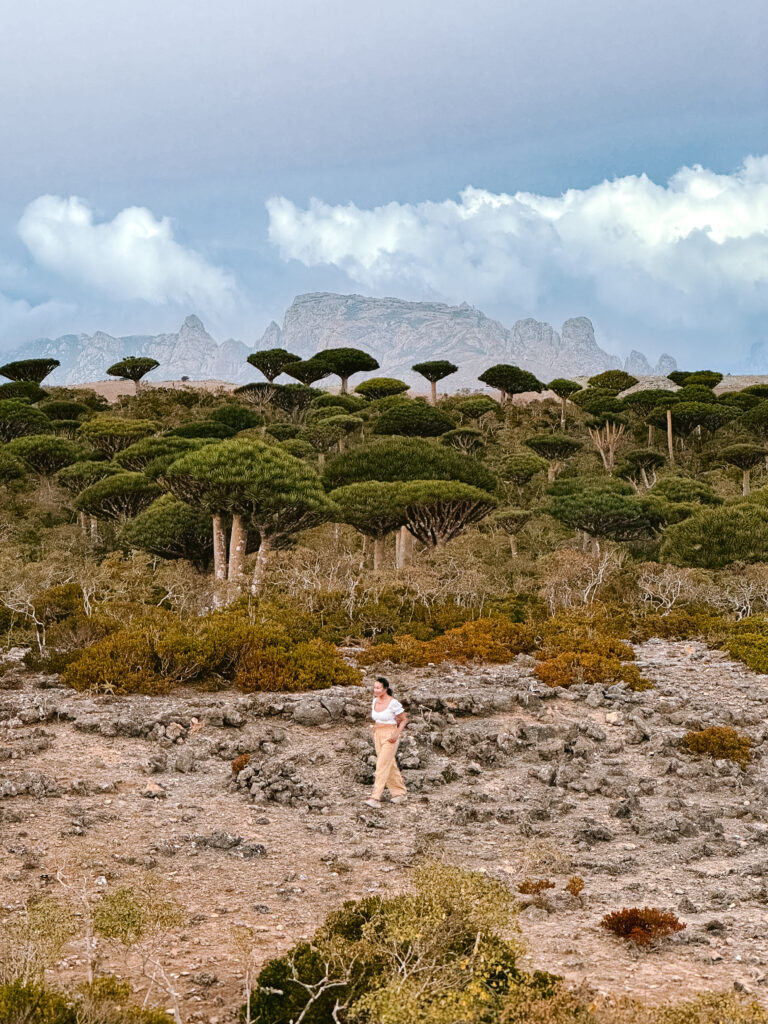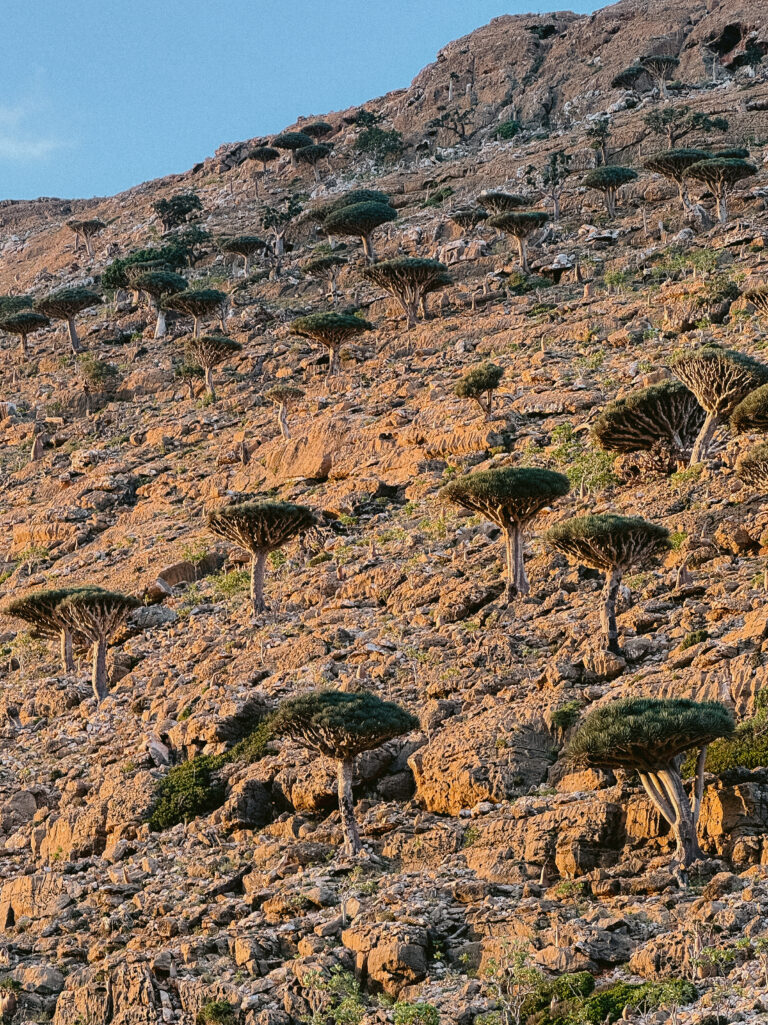Can You Visit Socotra? Here’s What I Wish I Knew Before I Went
Can you visit Socotra? Yes, but not in the way you might imagine. This isn’t the kind of place where you hop online, grab a cheap flight, and go explore on your own. Socotra is a remote island where independent travel isn’t possible. You can’t even book your own flights. You have to go through a tour operator, who will also arrange your Yemen visa and handle the logistics.
That part actually makes things easier, but here’s the catch: there are still so many things I wish I knew before I went. From confusing flight schedules to group tour surprises, Socotra is full of quirks that no glossy guidebook will prepare you for. In this post, I’m sharing everything I wish I knew before planning a Socotra trip so you have all the info you need to plan your trip.
👉 For a complete overview of Socotra Island tourism, including costs, itineraries, and responsible travel tips, check out my new guide.
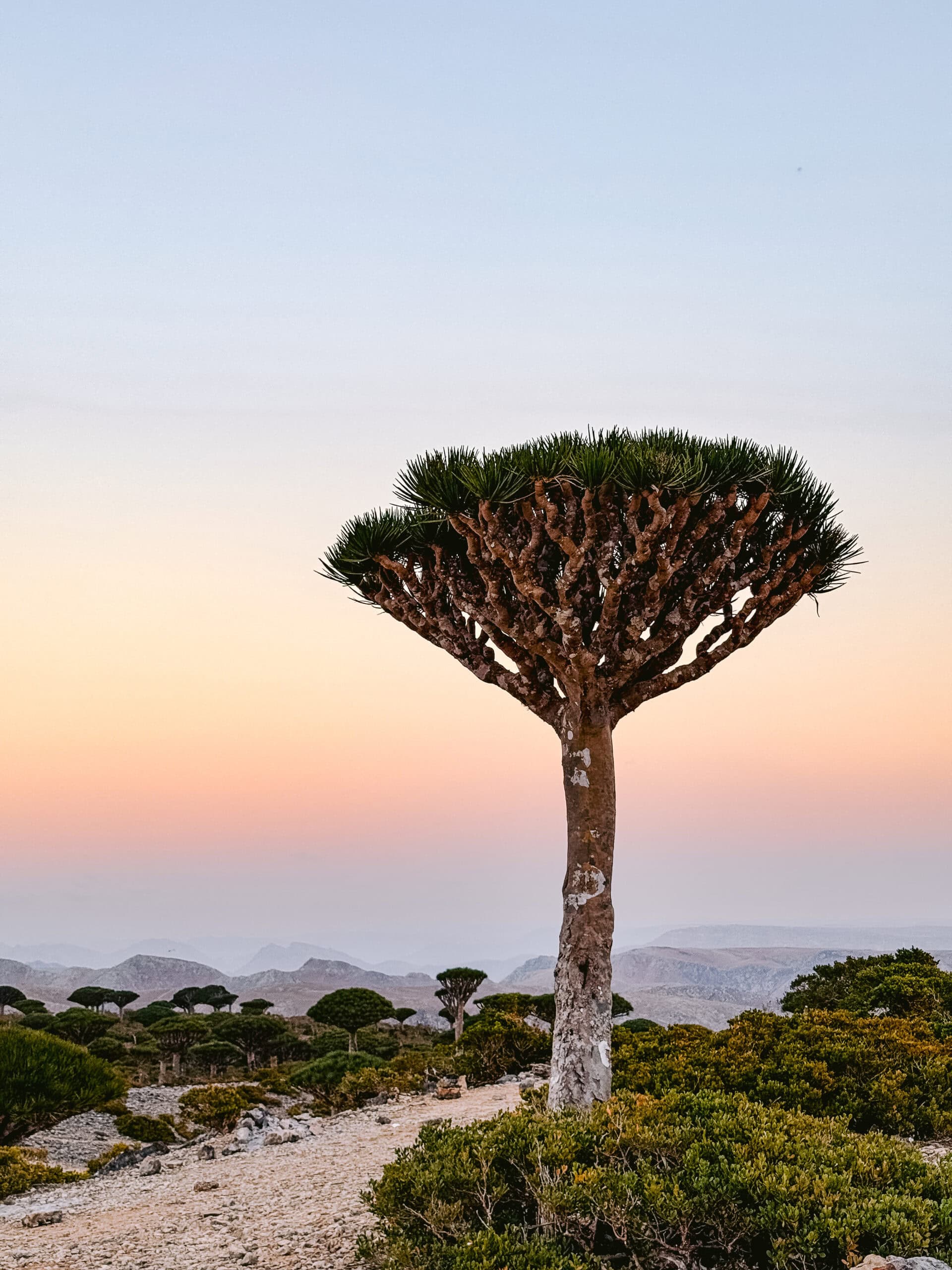
Flights to Socotra are limited and complicated
Flights to Socotra are limited. There are only 2–3 weekly humanitarian flights, and they dictate exactly how long you can stay on the island. On flight days, there’s usually just one arrival and one departure which means your tour dates and trip length are completely tied to the flight schedule. This is why you’ll often see tour companies advertise very specific start and end dates, usually 4, 5, or 8 days long. (A 6-day tour just isn’t possible.)
💡Bonus tip: If you’re unsure how long to book, I recommend the 8-day tour. It gives you enough time to see the south of the island and move at a more relaxed pace, while the 4–5 day tours tend to cram in multiple sites each day.
International connections to Socotra currently depart from Abu Dhabi or Cairo, but almost all operators will arrange flights from Abu Dhabi. Why? Because booking from Cairo is a pain in the you-know-what. And since these are humanitarian flights, there could also be last-minute schedule changes or weather delays.
💡Bonus tip: Given how infrequent the flights are, book early. Tours may not sell out, but flights do. Aim for 5–6 months in advance to secure your preferred dates. If you’re not sure if it’s worth the effort, here are 16 Incredible Things to Do in Socotra that make the journey worth it.
You can’t visit Socotra without a guide
Independent travel in Socotra isn’t possible unless you’re Yemeni. Every foreign traveler must go through a tour operator, who will also arrange your Yemeni visa and handle all the logistics: flights, permits, accommodations, and transportation.
When I last asked, there were around 25 Socotra tour operators, and new ones are popping up all the time. Tourism has quickly become the island’s main industry, and many local guides have started their own companies.
Why does this matter? Because while organized tours often visit the same big-name sites on Socotra, not all tour operators are created equal. Choosing the right one can completely change your experience, and that’s something most travelers don’t realize until they’re already on the island!
💡Bonus tip: Don’t just pick the cheapest operator. Ask about group size, included flights/visa, and flexibility… these small details make a huge difference!
Tours aren’t all the same, but many follow the same route
There’s no arguing that Socotra is otherworldly and beautiful. But here’s the truth: most organized tours on the island follow the same handful of stops. Once you’ve been, you’ll start recognizing the same landscapes in every photo — the beaches (Arher, Detwah, Qalansiyah, Shoab, Aomak), the sand dunes (Arher, Zahek), caves (Hoc’s Cave, Degub), and of course the legendary dragon blood trees in Ferhmin Forest and Diksam Plateau.
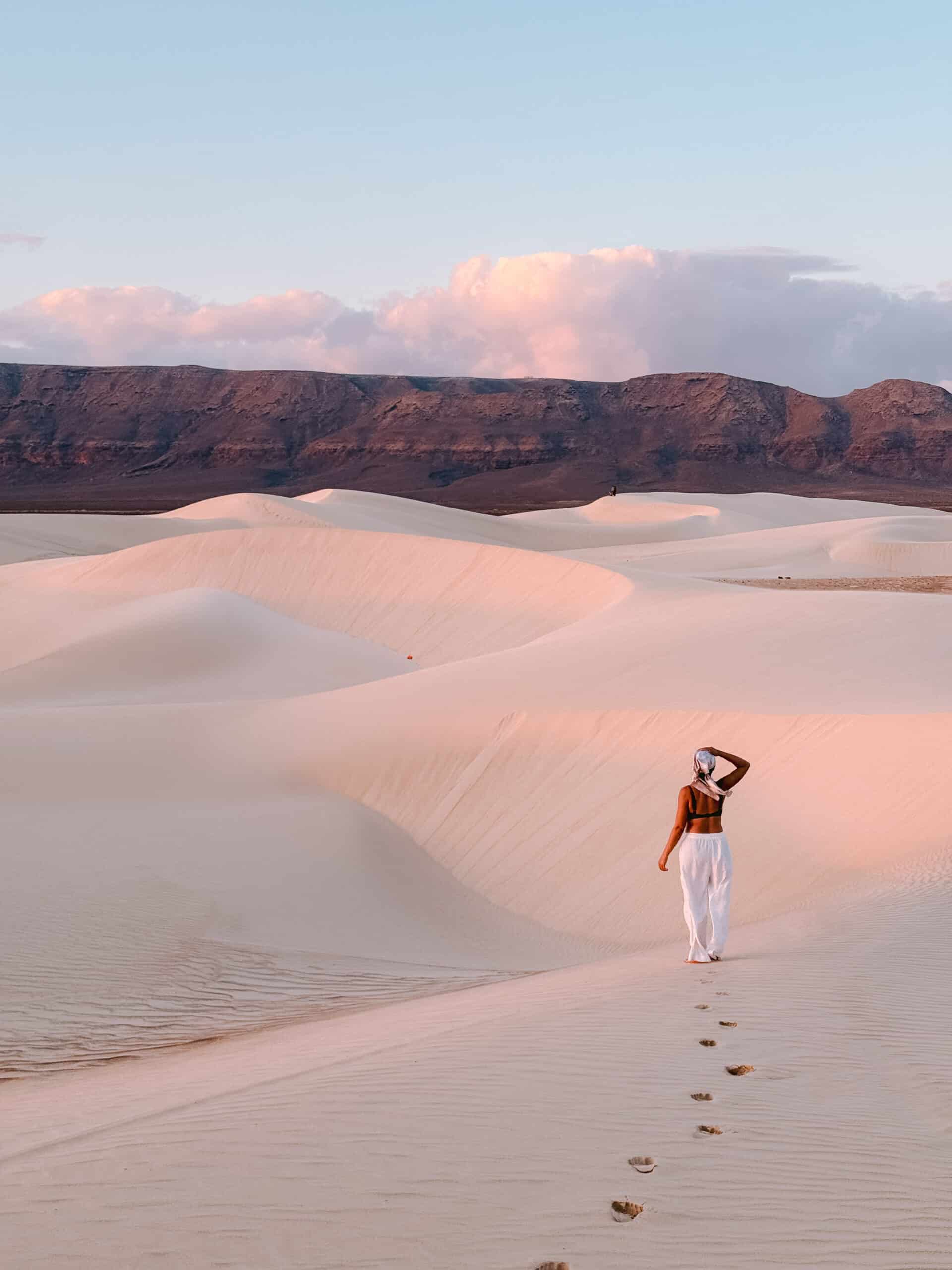
So what makes one tour different from another? Mostly length and pace.
- 4–5 day tours: Cover the highlights fast, often visiting multiple sites in a single day.
- 8-day tours: Add time in the south (Zahek sand dunes, Aomak Beach, Degub Cave) and a bit more breathing room.
- Longer tours: Sometimes venture into the mountains for hiking or bird-watching.
💡Bonus tip: If you have the time, go for the 8-day tour. It lets you see more without feeling rushed and you can actually enjoy places instead of just ticking them off a list.
If you book a private tour, your guide can often tailor stops to your interests: more hiking, photography, or just slowing down to swim in every wadi.
That said, not all tour companies are the same. Some bundle in flights and visa fees, others don’t. Some have better gear than others. Some group tours have more people than others. Some guides pick better camping spots than others. There’s a lot of little differences between the tours. Based on all the differences I saw in the tour companies there, I’ve got a cheatsheet of what to pay attention to:
⛺️ How do you choose a Socotra tour company?
Social media might make it seem like there are just a handful of operators, but there are a lot of them. When I visited, I was told there were around 25 registered tour agencies in Socotra, plus individual guides trying to start their own companies (it’s the best way to make a living on Socotra!).
So how do you know who to book with? Aside from the itineraries themselves, here are a few key differences between agencies to pay attention to:
In short: all Socotra tours cover the essentials, but comfort levels, guide experience, and little details vary a lot. That’s where doing your research can really make a difference.
P.S. I really liked my guide. He was attentive, spoke great English, and went out of his way to be such a great host! Send me an email if you want his contact info.
These are the must-see stops on any Socotra tour
If you’re hardpressed for time and want to know what are the absolute most breathtaking stops in Socotra, I’d recommend the following:
Arher Beach – This beach has a dramatic backdrop where towering cliffs and sand dunes tumble into the turquoise sea.
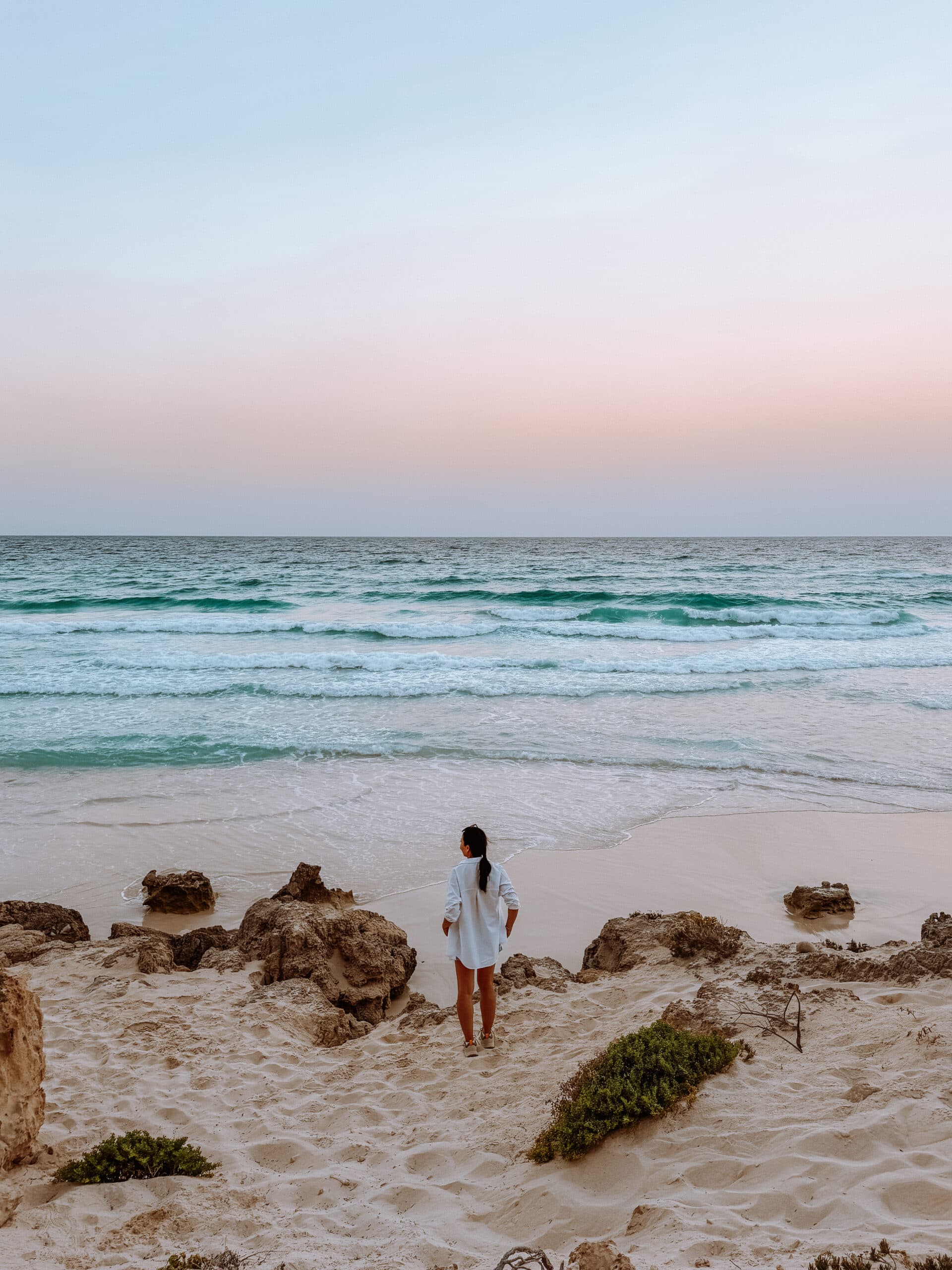
Homhil Infinity Pool – It’s a 20-minute hike to nature’s infinity pool overlooking Arher Beach and the Arabian Sea. Perfect for a dip before hiking down.
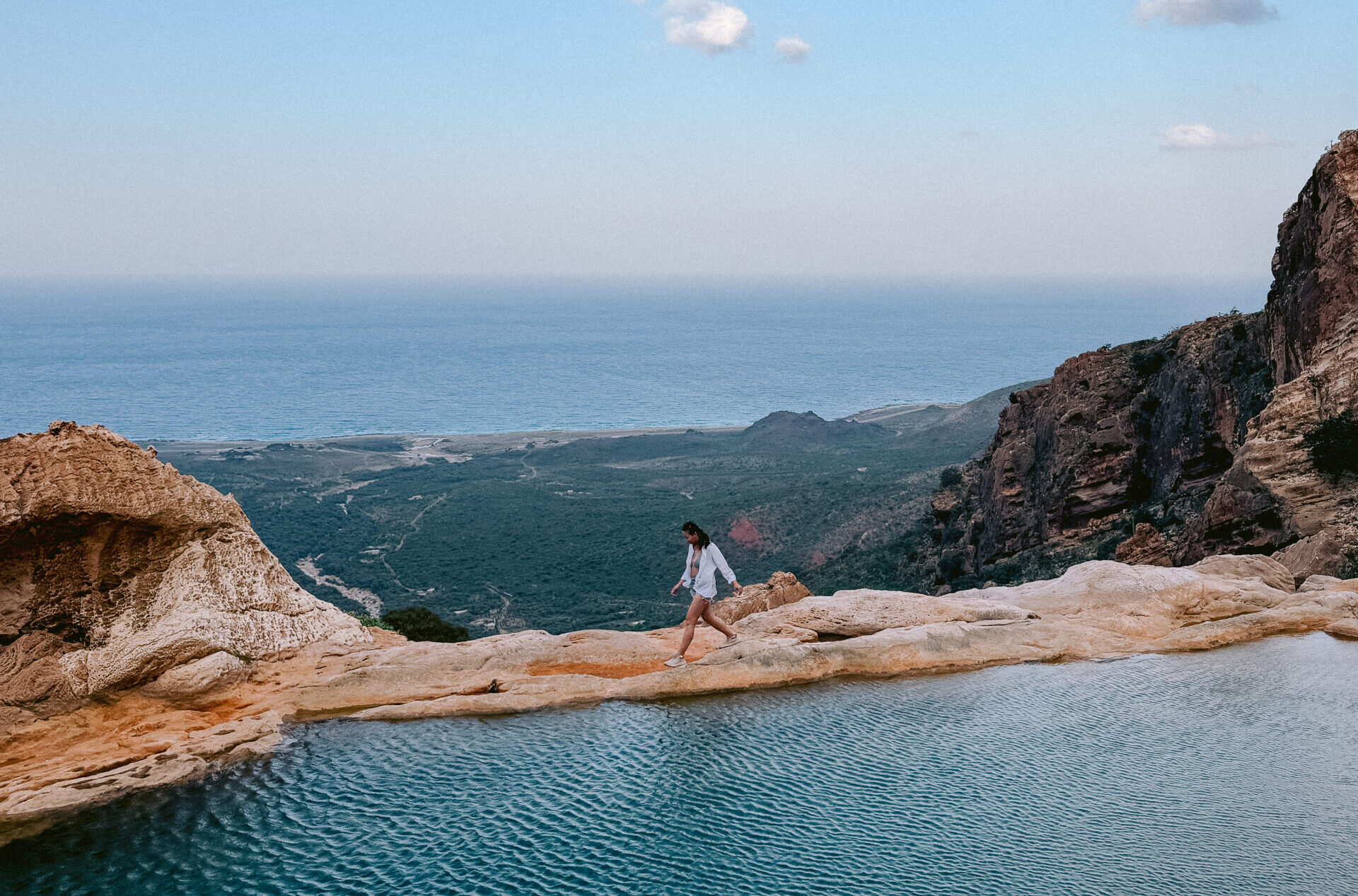
Detwah Lagoon, Qalansiyah, & Shoab Beach – These are all next to each other so if you come to one, you’ll go to all. This stop has some of the most stunning beaches on the island, provides a chance to swim with dolphins, and hang with Socotra’s resident cave man.
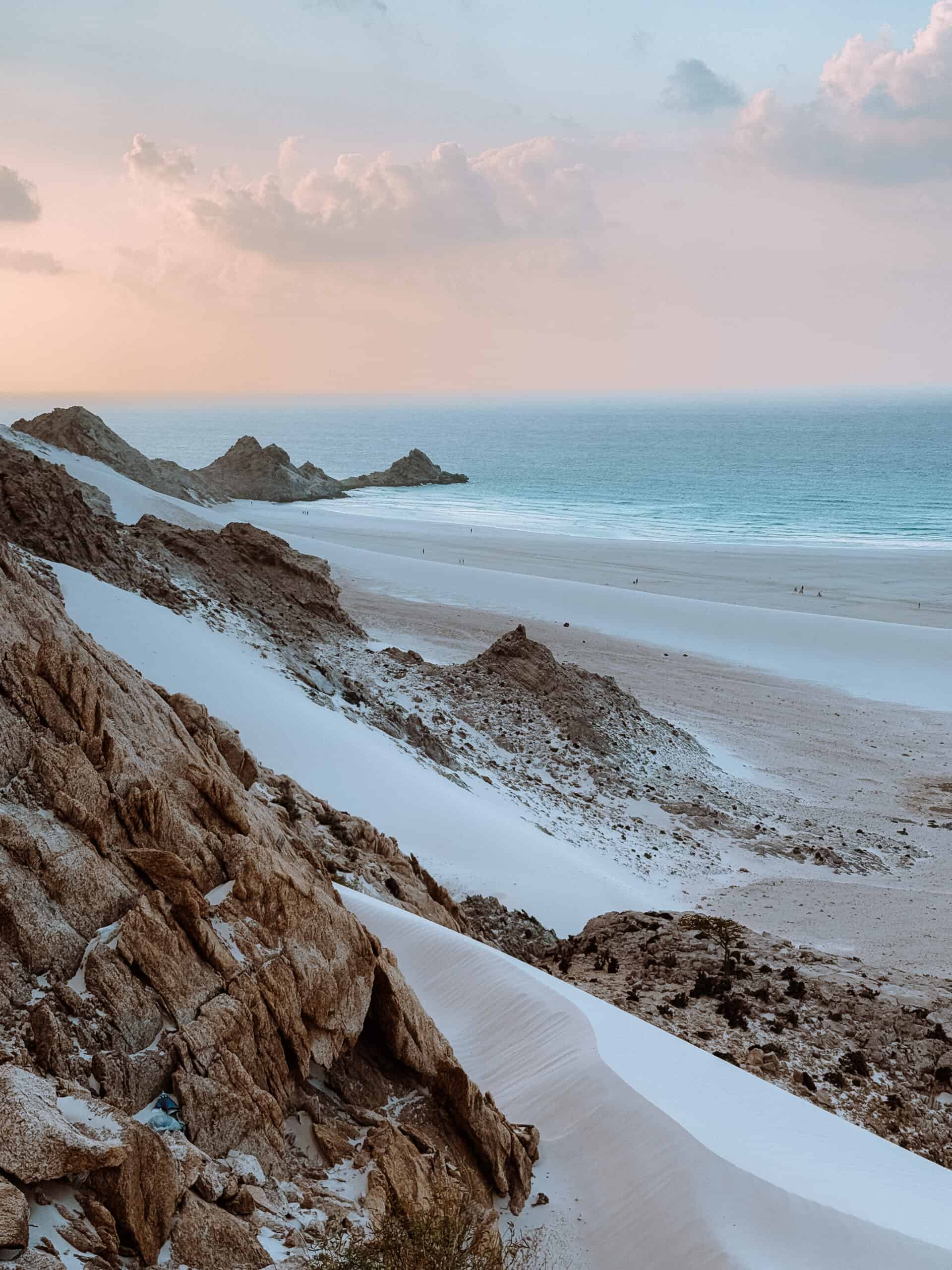
Wadi Kalasan – A breathtaking white canyon with clear freshwater pools begging you to jump in.
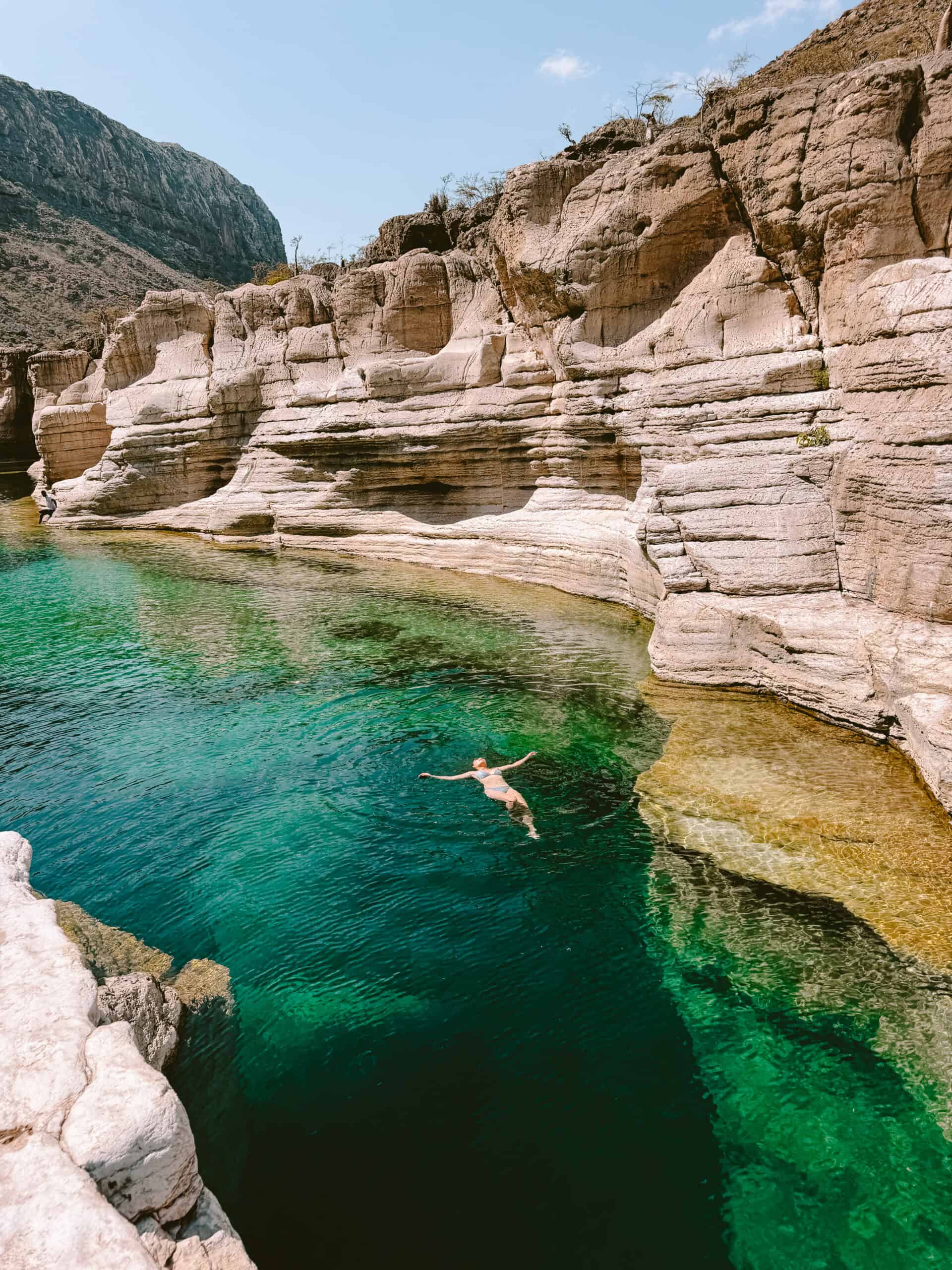
Firhmin Forest – The alien landscape of dragon blood trees you’ll never forget. At night, the stargazing is incredible — you can even see the Milky Way!
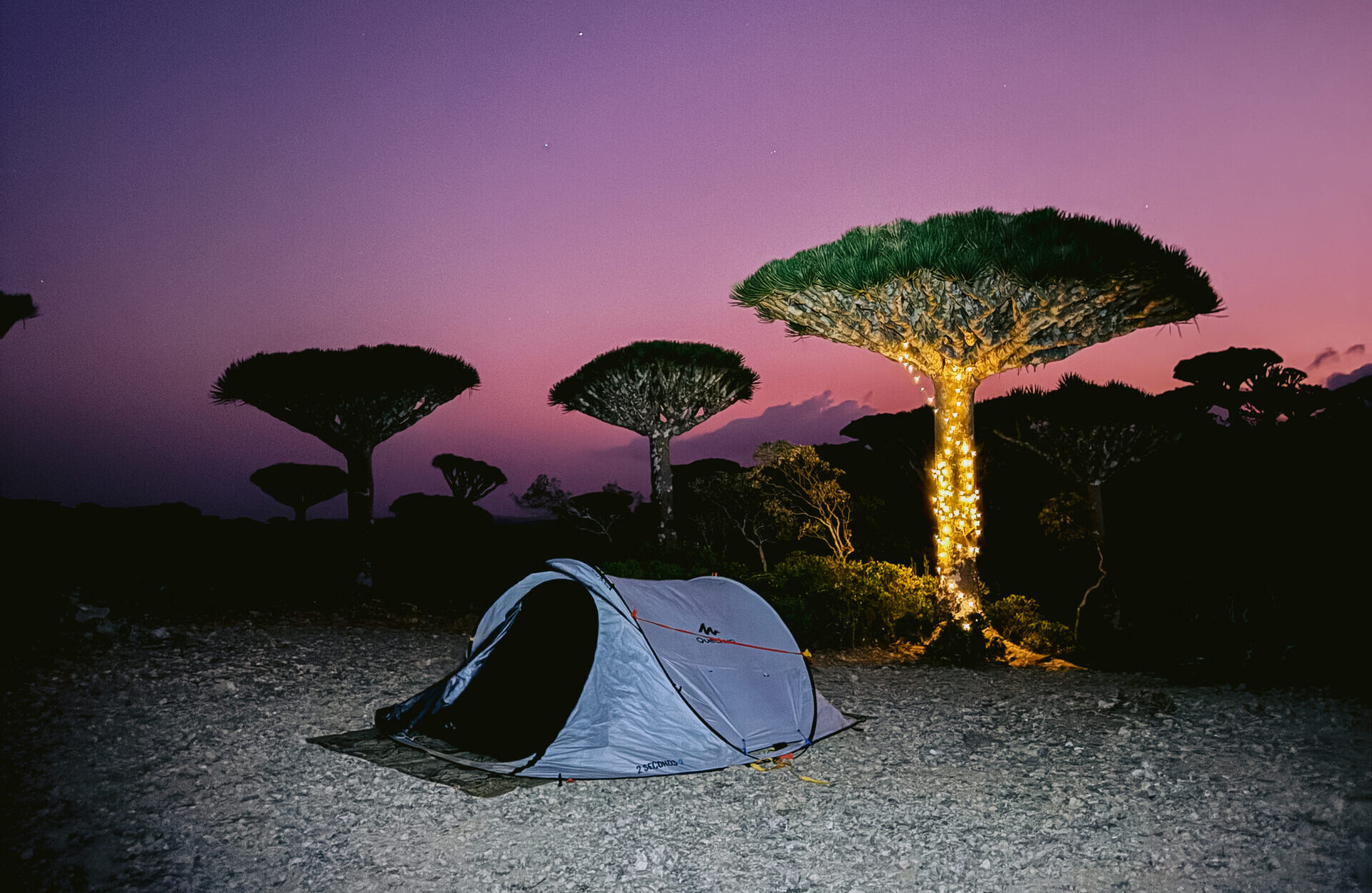
💡Bonus tip: My guide told me it’s very possible to see all these highlights on a 4–5 day tour, but it’ll be fast-paced. If you want to linger, give yourself 8 days.
If this list wasn’t enough, I’ve got a post focused on the incredible things you can do on Socotra.
Is Socotra safe? What to really expect
Yes, Socotra is safe to visit. I even traveled there as a solo female traveler and felt completely comfortable the whole time. It’s far removed from the conflict in mainland Yemen, and tourists generally don’t encounter security issues on the island.
That said, it’s still a remote island with limited infrastructure and medical facilities, so travelers should come prepared for basic conditions.
When’s the Best Time to Visit Socotra?
The best time to visit Socotra is between October and May, which is also the island’s official tourism season. Outside those months, the monsoons make travel difficult and tours generally don’t operate.
If you’re wondering about the sweet spot within the season, my vote is for January and February. The seas are calmer, the weather is pleasant, and the temperatures are comfortable — perfect conditions for exploring Socotra’s beaches and wadis!
It’s not always big tour groups
Scrolling social media, you’d think Socotra was only for big, adventurous camping groups — all young, fit, and smiling in those “new backpacker crowd” reels. That’s the impression I had before going.
But the reality on the island is totally different. I saw plenty of solo travelers and small groups of two or three. In fact, the largest group I came across was just six people.
So if you prefer traveling in a smaller group, with family, or even on a private tour, you’ll be in good company. Socotra isn’t only for the adventurous twenty-something crowd — families and older travelers make the journey, too!
That said, it helps to be healthy and reasonably mobile. Socotra is a remote island with limited medical facilities, basic camping or hotel options, and plenty of rough terrain for walking and hiking.
Accommodation: You can camp or stay in a hotel
Most group tours in Socotra involve camping since there’s limited infrastructure outside the capital. Therefore, camping is the easiest way to stay close to the sites and the views are unbeatable. I still remember unzipping my tent to the sound of waves and finding the turquoise sea right in front of me. That’s a million-dollar view to wake up to!

But here’s what most blogs (and influencers) don’t tell you: camping isn’t the only option. There are basic hotels in Hadibo, the capital, if you’d rather not camp. I did a mix of both by alternating nights between camping and staying in a hotel. It gave me a balance: showers and air-conditioning one night, starry skies and sunrise over sand dunes the next. I list what’s typically included on tours (tents, toilet tents, Starlink, meals) in the Socotra Island Tourism Guide.
If you’d rather stay in a hotel the whole time, that’s possible as well. The hotels are all in the capital, Hadibo. The best hotel there is called Summerland, which is where I stayed. Don’t expect luxury. It’s more like a simple 2-star by Western standards and on cloudy days, there’s no hot water (they run on solar). But, it has the essentials plus wifi, and hey — you’re not in a tent. 😉
What you trade off if you stay only in hotels
- You’ll miss out on homecooked camp meals — I preferred my guide’s food over restaurant meals in Hadibo.
- You’ll spend more time on the road since Hadibo isn’t always on the way to the sites.
- You won’t get those magical sunsets and sunrises right outside your tent.
If you’re keen to stay in a hotel, make that clear to your tour operator so they can plan accordingly. Just know it will bump up your Socotra tour price, since hotels are limited and pricier than camping.
Internet and connectivity on Socotra
A lot of people describe Socotra as “off-grid” with zero internet. The truth? There is connectivity, but it’s patchy. On a remote island with limited infrastructure, you shouldn’t expect fast or reliable service, but you won’t be completely cut off either.
How to stay connected in Socotra
- Local SIM card: You can buy one in Abu Dhabi that works on the island, though the connection is inconsistent in Socotra.
- Guide’s hotspot: Many guides will share their data (when they have it) with tourists. Again, the connection will be patchy.
- Camp wifi: At some beach campsites, you can even purchase a wifi pass (my guide arranged one for me).
- Starlink: Some tours now offer Starlink access — either included or at an extra cost (it’s pricey, though, so be prepared to open the wallet). I tried it for a day; it worked well, but you had to stay close to the panel.
Or, you can just enjoy your time in Socotra without internet! It’s the perfect excuse to embrace disconnecting and focus on the alien landscapes around you.
Other Things I Wish I Knew
What kind of bag should I bring to Socotra?
You can bring rolling luggage even if you’re camping. Guides move the luggage to your tent, so as long as it fits inside the tent and in the car trunk, you’ll be fine. I never had to carry my bag myself.
💡Bonus tip: Bring whatever bag (backpack or roller) works for you.
What’s the bathroom situation like in Socotra?
Be prepared for anything. Many sites have basic facilities, but they may be dirty, locked, or far away from camp. And sometimes, there’s no bathroom at all.
Here’s what I encountered:
|
Campsite |
Bathroom Situation |
|---|---|
|
Dihamri Marine Reserve |
Western toilet (but dirty) |
|
Detwah Lagoon |
Squat and western toilets |
|
Firhmin Forest |
Yes, but it was locked when I was there! |
|
Arher Beach |
Yes, but it could be far away from your campsite (I ended up never using it) |
|
Homhil Infinity Pool |
Squat toilet (not the cleanest) |
|
Aomak Beach |
Western toilet |
💡Bonus tip: I packed “pee bags” and they were a lifesaver. Highly recommend.
What about showers?
Expect variety. Don’t count on hot showers either. Some campsites have showers, others don’t. At Arher, there’s a freshwater spout on the beach that many use instead. Others just swim in the sea. Check out my guide on Socotra where I mention what facilities I saw at each campsite.
What should you absolutely pack?
Links are to what I personally brought to Socotra and would recommend:
- Close-toed hiking shoes (the terrain is rough)
- Medicines + prescriptions (don’t count on local pharmacies)
- Headlamp
- Portable charger / solar power bank
- Sunscreen + bug spray
- Travel blanket or sweater (it gets cold at night in Firhmin Forest)
- Disposable urinals
- Snacks (limited options on the island)
- Most importantly, bring a flexible attitude. If you’re high-maintenance or a chronic complainer, Socotra isn’t the place for you.
A full list of what to pack for Socotra is in my Socotra guide.
Final Reflection: So, Can You Visit Socotra?
Can you visit Socotra? Absolutely, and you should. Right now, it’s an underdeveloped, remote island that feels otherworldly and untouched, which is exactly what makes it so friggin’ special.
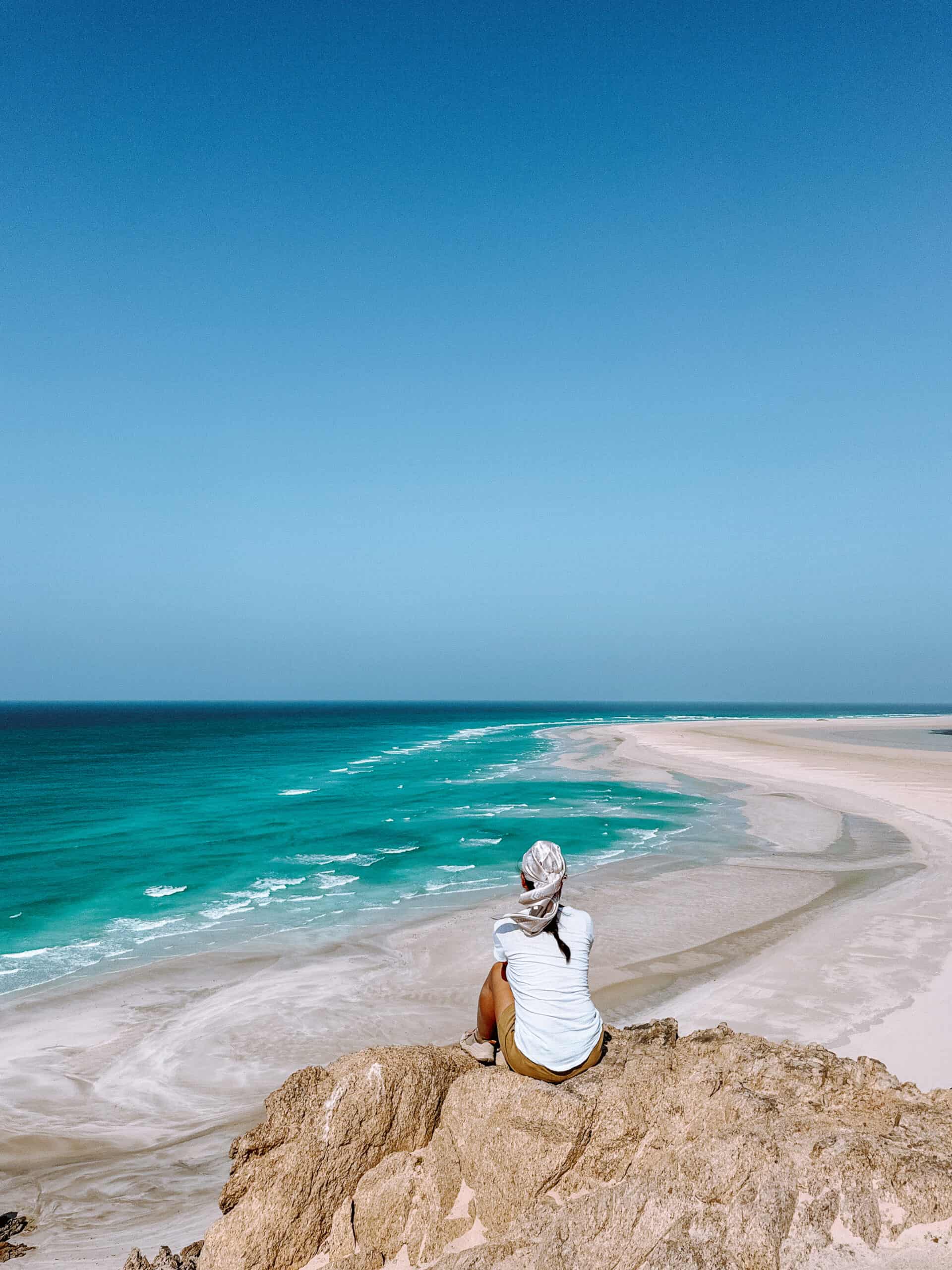
If Socotra even slightly piques your interest, I’d recommend going sooner rather than later. The island is likely to change as more travelers discover it and as the UAE invests in turning it into their next tourism hot spot.
Yes, the trip takes some planning, but once you book with a tour operator, they’ll arrange your Yemen visa and flights to Socotra. After that, all you need to do is pack, stay flexible, and count down the days until the adventure of a lifetime!
Frequently Asked Questions
No. Independent travel to Socotra isn’t allowed unless you’re Yemeni. All foreign visitors must book through a tour operator, who will also arrange the Yemen visa and flights.
The only way to get to Socotra is by flight, usually from Abu Dhabi (sometimes Cairo). There are only 2–3 flights per week, so your trip length depends on the flight schedule.
Yes, Socotra is considered safe. It’s far removed from conflict in mainland Yemen. That said, it’s still a remote island with limited infrastructure, so come prepared for basic conditions.
No. Most tours include camping, but there are also basic hotels in Hadibo. Some travelers choose a mix of camping and hotel stays.
The best time to visit Socotra is between October and May, during the official tourism season. January and February are especially good months for calm seas and pleasant weather.

